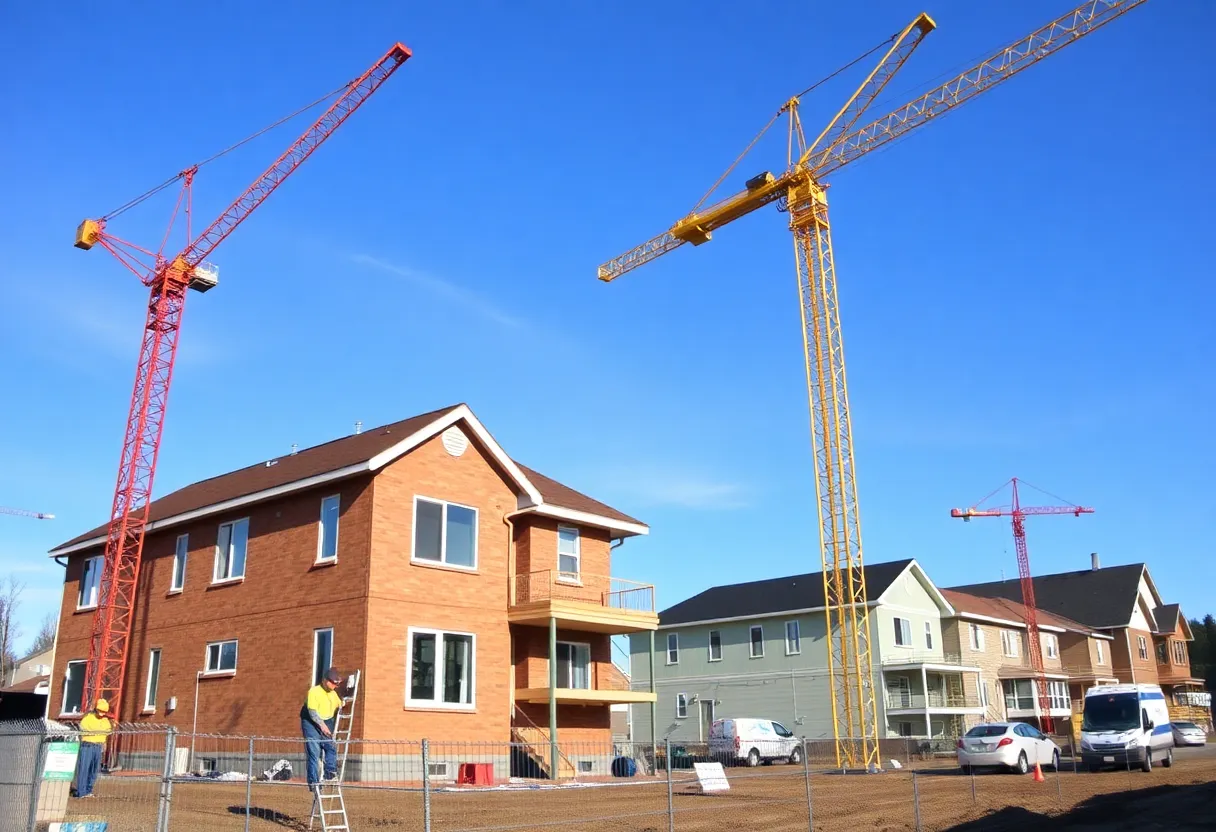News Summary
A recent study by the Building Industry Association of Washington reveals that construction costs for new homes have significantly increased, with the average cost reaching $309 per square foot. Families are struggling with a median sales price of $690,701 for newly constructed homes, while townhomes are even more expensive at $404 per square foot. Rising land prices and regulatory costs contribute to this challenging housing market, prompting lawmakers to propose bills aimed at reducing these burdens and improving homeownership opportunities.
Olympia, Washington — A recent study conducted by the Building Industry Association of Washington (BIAW) has unveiled a dramatic surge in construction costs for new homes in the state, significantly surpassing national averages. With the average cost to build a single-family detached home hitting $309 per square foot, and a median sales price for a newly constructed 2,505-square-foot home reaching $690,701, families are finding it increasingly difficult to achieve homeownership.
Furthermore, the average cost for townhomes is reported at $404 per square foot, translating into a median sales price of $592,195. This figure indicates that townhomes are proving to be more expensive to build than single-family homes, placing an additional strain on buyers’ budgets. In comparison, the national average cost for a similar-sized home is considerably lower, with averages sitting at $428,215.
A major driver of these high construction costs is the soaring price of raw land. In key counties, including King, Pierce, Snohomish, Kitsap, and Thurston, the median price for a lot stands at $286,996. Associated regulatory costs contribute significantly to the final sale price of new homes, accounting for 23.8% or approximately $164,386 on average. Regulatory expenses arise from various sources, such as labor laws, workers’ compensation policies, land-use restrictions, and impact fees imposed by local, state, and federal governments.
Add to this the strict labor and environmental regulations present in Washington, including costly protection requirements against heat and wildfire smoke, and the landscape for home construction becomes even more challenging. Local governments further drive up costs by imposing impact fees on new developments, which are designed to fund infrastructure improvements.
Further complicating this issue are zoning laws and intricate building codes, particularly those that address energy efficiency. These regulations restrict the availability of land for development, ultimately increasing construction expenses and affecting housing availability.
Families in Washington are facing hurdles to homeownership due to the escalating costs associated with construction. In response to the growing concern, lawmakers have introduced several bills aimed at reducing regulatory burdens. These include Senate Bill 5184, which seeks to modernize parking requirements for housing developments, House Bill 1096, which facilitates easier subdivision of land for building purposes, and Senate Bill 5729, aimed at expediting residential permit approvals.
Industry leaders are advocating for reforms in apprenticeship and training programs to counteract labor shortages in the construction sector. They argue that current policies favor established labor unions and inhibit the entry of new skilled workers, consequently driving up labor costs.
The BIAW has cautioned that unless significant changes occur, home prices are expected to continue rising due to persistent high regulatory costs and policy constraints. Newly proposed tariffs are poised to exacerbate the situation, with warnings that these could inflate construction costs even further.
The National Association of Home Builders (NAHB) has reported that new tariffs could potentially alter home renovation plans for clients due to increased material costs. Local contractors are already expressing concerns regarding rising material costs influenced by tariff discussions affecting essential goods like steel and lumber.
Currently, around 7% of goods used in residential construction are imported. Essential materials, such as softwood lumber and gypsum for drywall, are particularly vulnerable to these new tariffs. As a strategy to mitigate potential price increases resulting from market volatility, contractors have begun adjusting their project timelines and expediting material orders.
Additionally, rising fuel costs, necessary for the transportation of timber and other building materials, contribute to the ongoing upward spiral of construction prices.
Despite attempts to alleviate regulatory challenges, potential buyers may need to explore the option of purchasing existing homes or consider regions with fewer regulatory constraints as they navigate the tough housing market in Washington.
Deeper Dive: News & Info About This Topic
HERE Resources
Additional Resources
- DJC: Rising Construction Costs in Washington
- KIRO7: Why Washington Home Construction Costs Surged
- Seattle Times: Fed Building Overhaul Costs
- Wikipedia: Construction Cost
- Fox 13 Seattle: Trump Tariffs and WA Contractors
- Google Search: Washington Construction Costs
Author: STAFF HERE CLEVELAND WRITER
The CLEVELAND STAFF WRITER represents the seasoned team at HERECleveland.com, your premier source for actionable local news and information in Cleveland, Cuyahoga County, and beyond, delivering "news you can use" with in-depth coverage of product reviews for personal and business needs, local business directories, politics, real estate trends, neighborhood insights, and state news impacting the region—backed by years of expert reporting and robust community input, including local press releases and business updates, while providing top reporting on high-profile events like the Rock and Roll Hall of Fame inductions, Cleveland International Film Festival, and holiday parades, alongside key organizations such as the Cleveland Clinic, Cleveland Orchestra, and Great Lakes Science Center, plus leading businesses in manufacturing and healthcare like Sherwin-Williams and University Hospitals, and as part of the broader HERE network including HEREDayton.com, offering comprehensive, credible insights into Ohio's vibrant landscape. HERE Cleveland HERE Dayton





